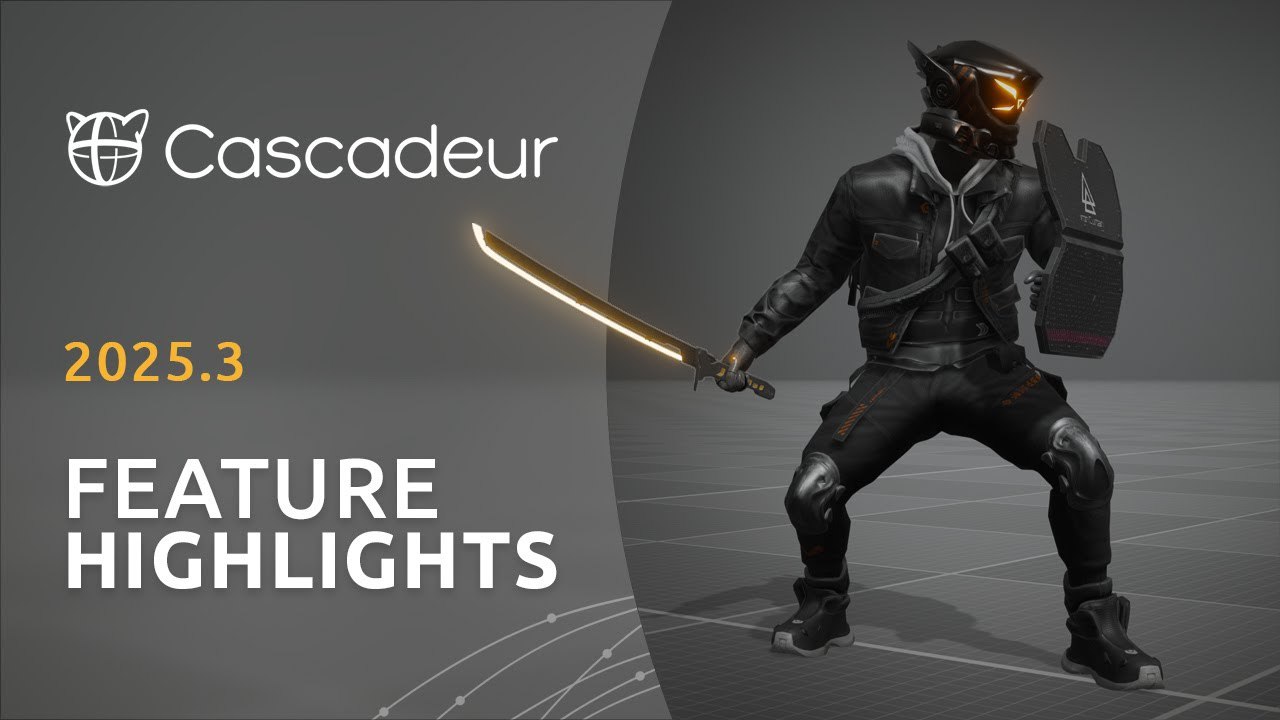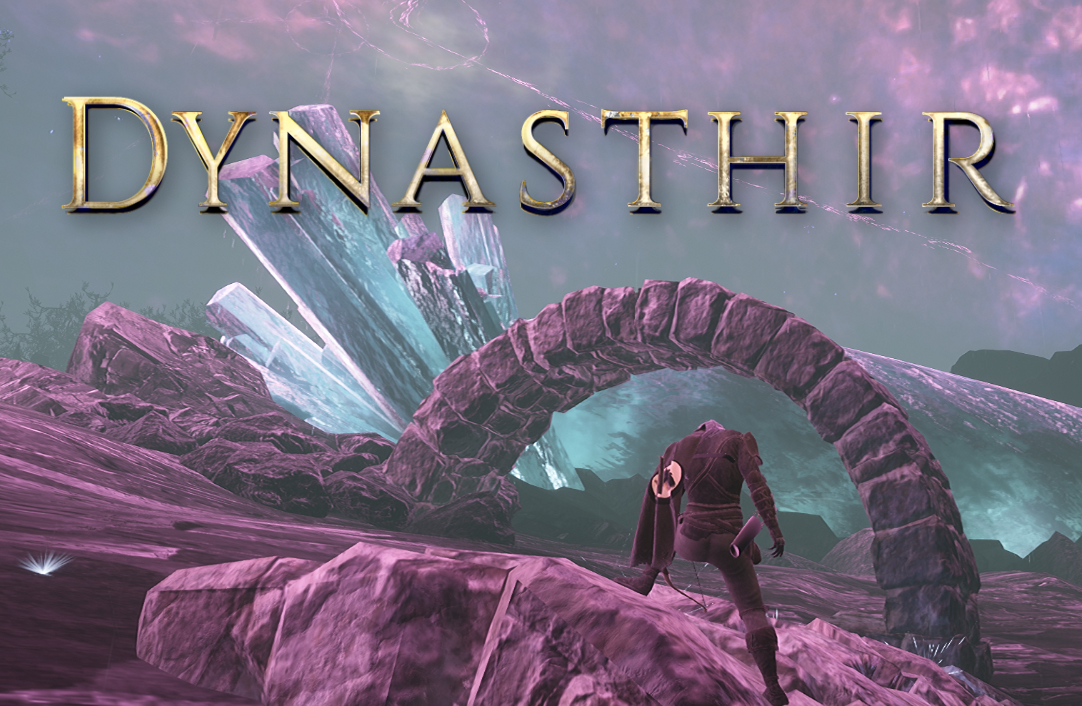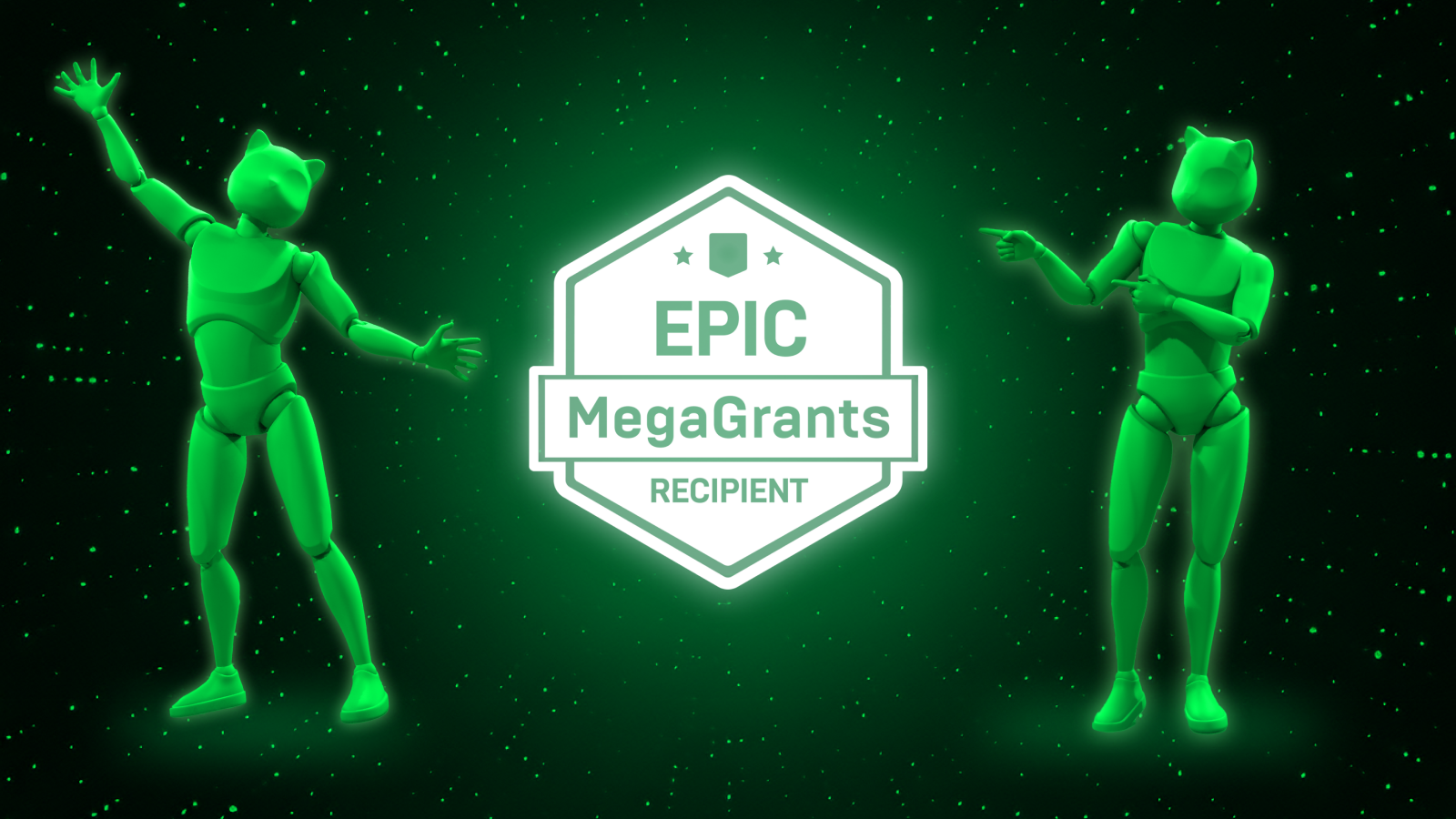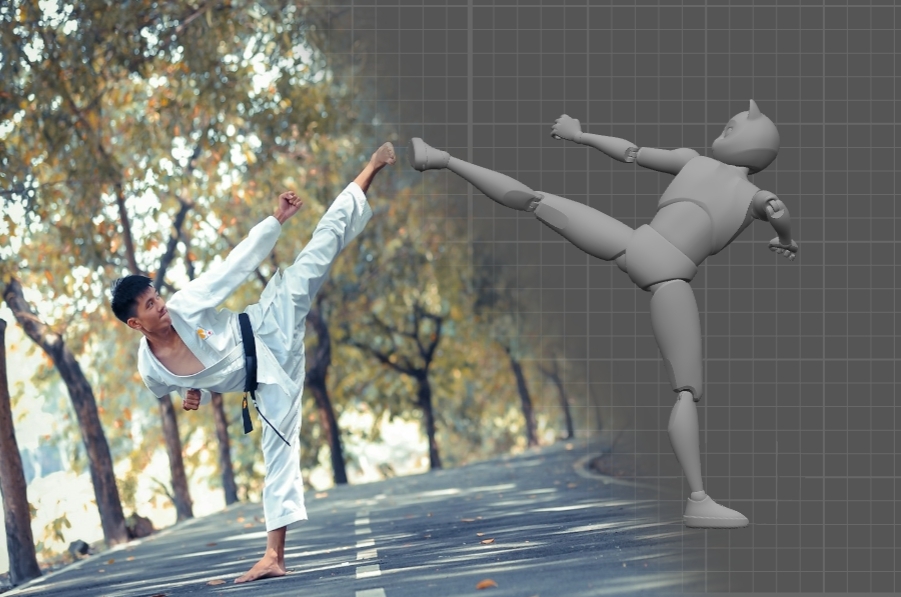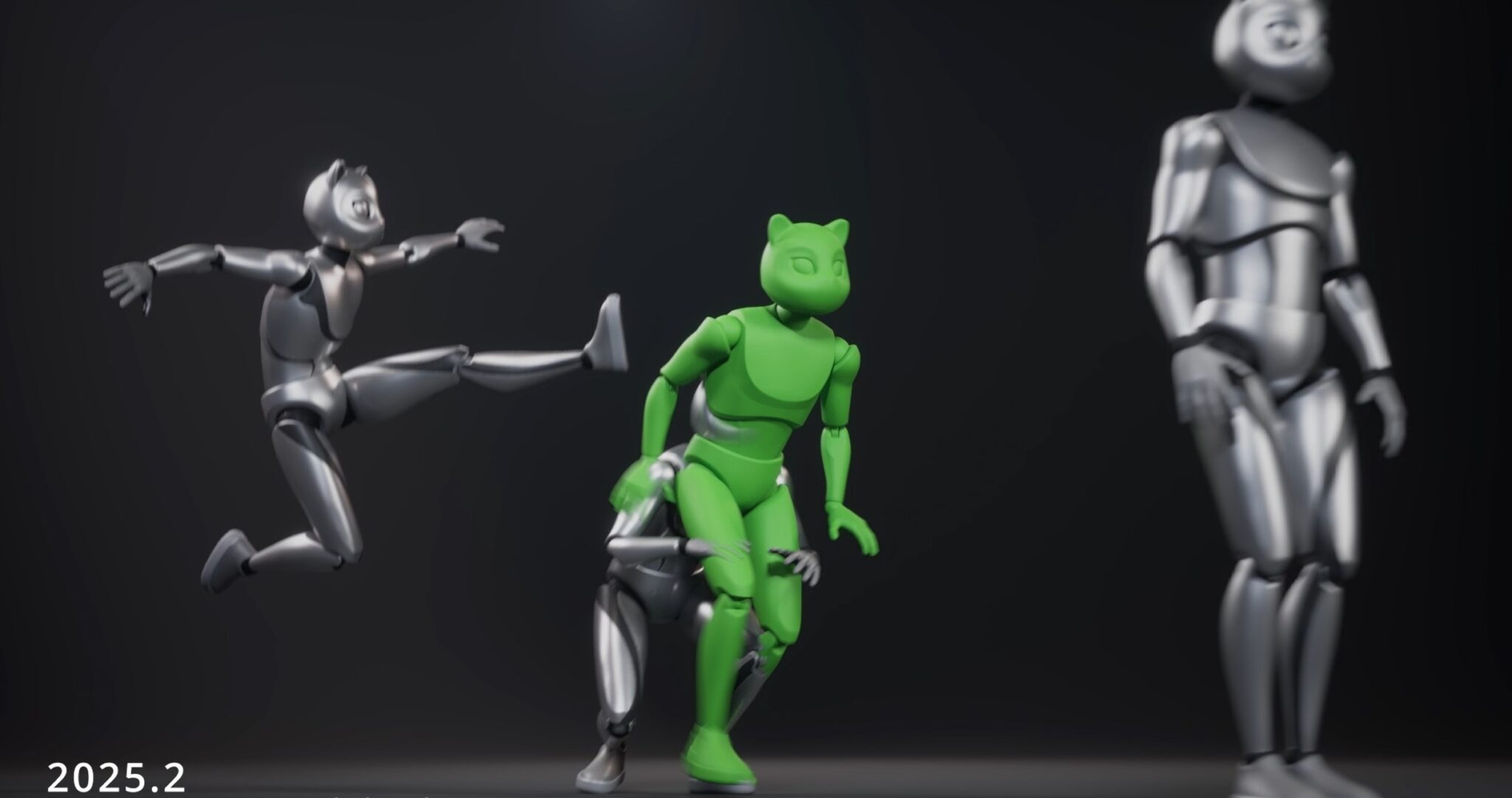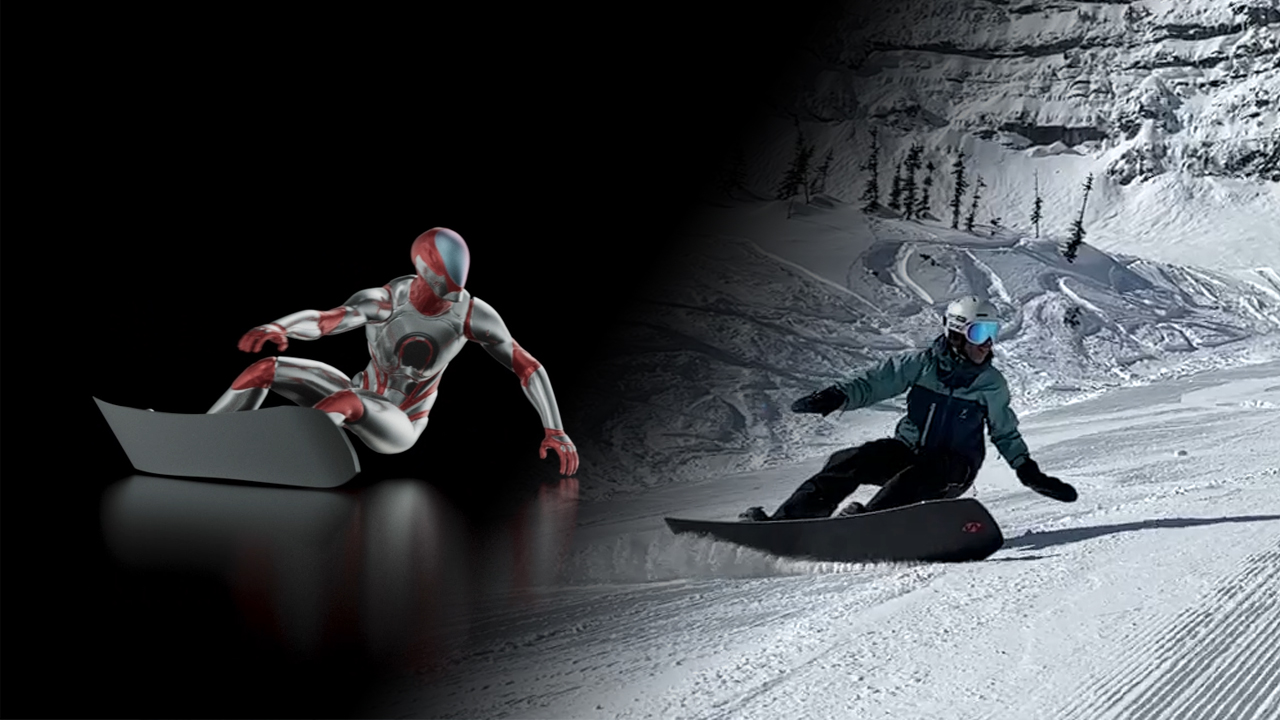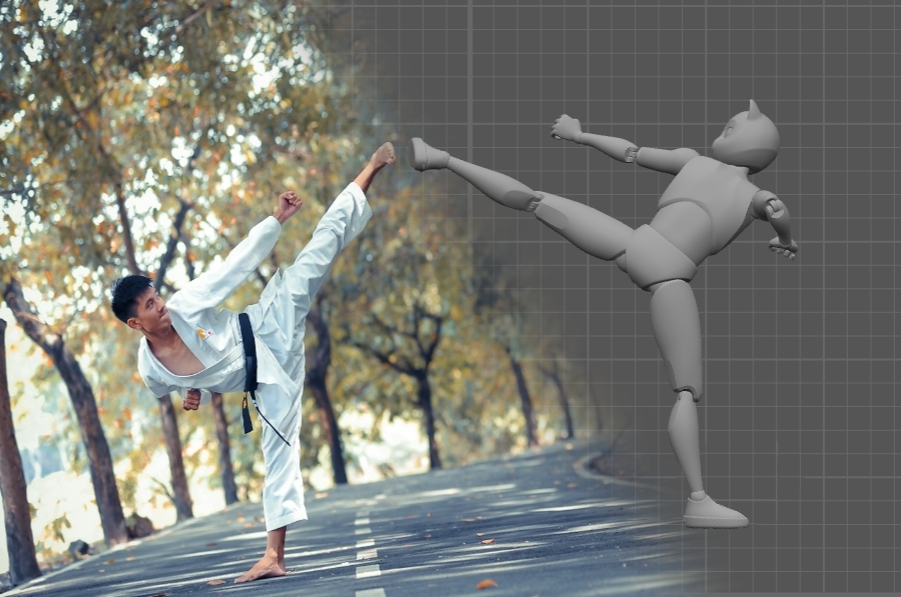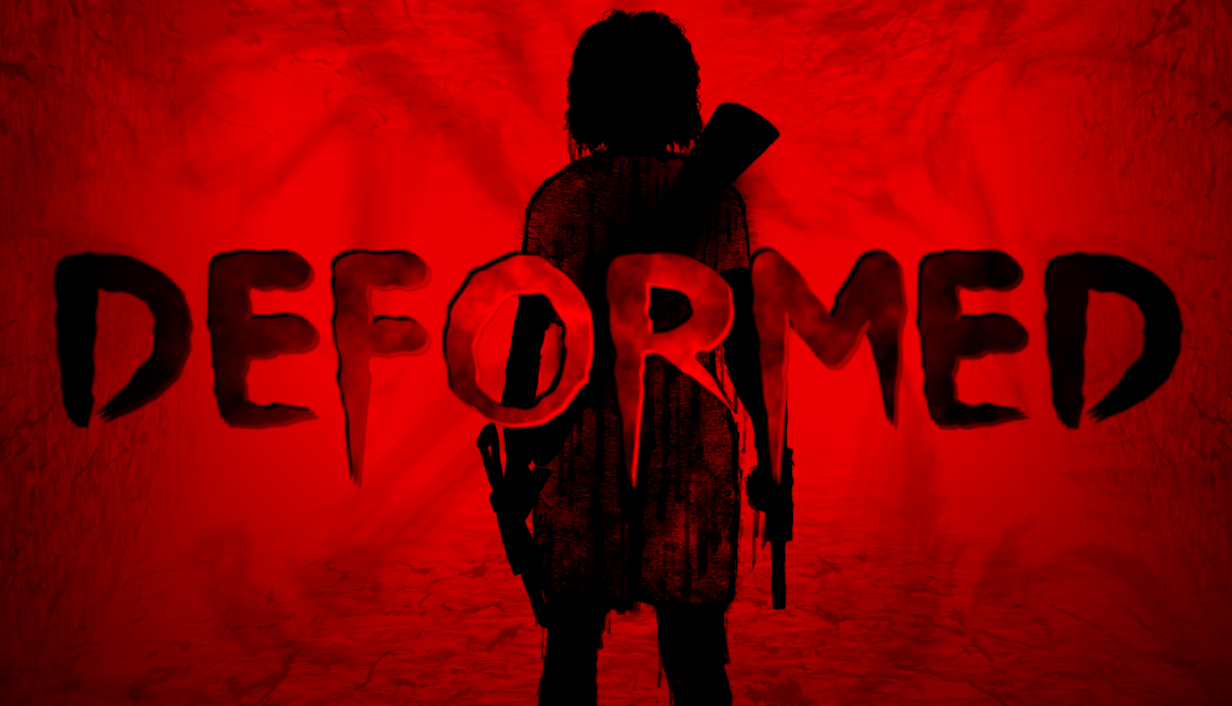
"Hi! I'm working solo on a game that's based around the player learning American Sign Language through RPG-style immersion, so I was really excited to see the finger AutoPose feature on the docket, but seeing that it's restricted to paid plans is a real bummer.
It's amazing of you guys to provide as much as you do for free, but even the cheapest Pro subscription is kind of steep for a lot of people right now. But thank you for the hard work! "
Among the many emails we receive about Cascadeur every day, the above message from May 2023 was quite extraordinary. A solo developer plans to use Cascadeur's latest Pro feature, Finger AutoPosing, for animating a game about sign language for the hearing impaired? What a great idea!
Such a promising inclusive project immediately piqued our interest. So we made an offer to Holly, who sent us mail: "We will provide you with a pro-license of Cascadeur for your project, and in return you will tell the readers of our blog about your game in a short essay."
To our delight, Holly agreed to our proposal. After a two months of intensive work with Finger AutoPosing, she shares her experiences with you in the following essay. Besides some details from her own life story and first insights into the game concept (current working title "ANGOR"), she also gives interesting insights into the silent but fascinating world of sign languages.
Enjoy reading her report!
I've always been passionate about gaming and languages, and I've long dreamed of merging these two interests into a single project. However, I've faced significant challenges along the way, primarily due to my ADHD and the intricate nuances of the languages I wanted to work with. Traditional classroom settings have always been a struggle for me, as is the case for many people around the world, ADHD or not. The only things that have truly helped me overcome these barriers are immersion, interaction, and a genuine investment in people.
One particular language that has fascinated me is sign language.This beautifully expressive method of communication conveys ideas in their purest forms and facilitates interactions in a manner that is both mystifying and exhilarating. It's different from spoken language in numerous ways, and the differences can be intimidating to beginners like me.
Sign language has hundreds of variations worldwide, each unique and rich in its own way. For instance, the United States is home to ASL and BASL (Black American Sign Language), which incorporates elements of African American Vernacular English. The diversity and expressiveness of these languages have driven me to learn more about them.
However, in my quest to learn ASL, I encountered a few significant hurdles: animation, engagement, and setting. As a solo developer, animating the myriad of hand expressions required to portray a cast of characters with their own signing quirks seemed like an insurmountable task. That was until I discovered Cascadeur, specifically its finger auto-posing system.

Cascadeur's Finger AutoPosing system in action
Cascadeur's AutoPosing system allows artists to animate intricate parts such as fingers with ease, ensuring that transformations made to stay joints within a believable human range of motion. With this tool, the issue of misaligned hand animations - my previous stumbling block - was no longer a concern, leaving only engagement and setting for me to worry over. How do you make an academic game feel fun? How do you make people want to keep learning and playing?
To that end I started writing one of my favorite kinds of stories: a personal horror. In the setting of this game, the player finds themself suddenly thrust into a position that demands their attention and ability to learn - a global catastrophe in the form of a virus that steals from its victims their ability to effectively communicate with those around them through forms of aphasia and and other neurological shackles. In order to navigate this world that looks so like what the player knows but is so alien in what it demands from them, alternative forms of communication quickly become the only way forward.
But how do we introduce this demand narratively? With the characters that surround our players! This is Rhys, the first character our player meets in our Demo level. For now he will be represented by Manny, one of Unreal Engine's base skeletons.A backpacking musician with an unquenchable thirst for knowledge, Rhys is already fluent in ASL and teaches us our first signs. He'll also be accompanying us throughout the level.

Unreal Engine's sample character Manny signing "Hello, I am Rhys!"

The ASL signs for "HELP", "LIGHT" and "REALLY"
Fingerspelling is our next main mechanic, and we'll demonstrate it by having the player input their own name. In real life, signing individuals have unique signs representing their names, and often reflect individual quirks and characteristics. While I am considering how best to approach this for future iterations, I decided to start with the basics: teaching the player the ASL alphabet.
To simulate this in-game, first we disable player movement controls and transition to our signing animation graph. We then call up our letter bank, and enable player input via buttons that display all of our signs.As the player interacts with letter buttons the signs will be displayed in real time along with their written-English counterparts, with transitions smoothed between each and capped at each end by idle animations.

Spelling the word "American"

Spelling the words "Sign Language"
It's crucial to note that learning and using sign language must be done with respect for the Deaf and Mute communities. As someone who is learning to sign, I am mindful of the isolation often faced by these communities due to language barriers. Therefore I plan to have this game playtested and guided by ASL speakers throughout development to ensure it is accurate and respectful.
If your interest in the topic of ASL has been aroused, you can contact her under the nickname WarieLym#2064 on our Discord server. She will certainly be happy to receive feedback and answer your questions.
